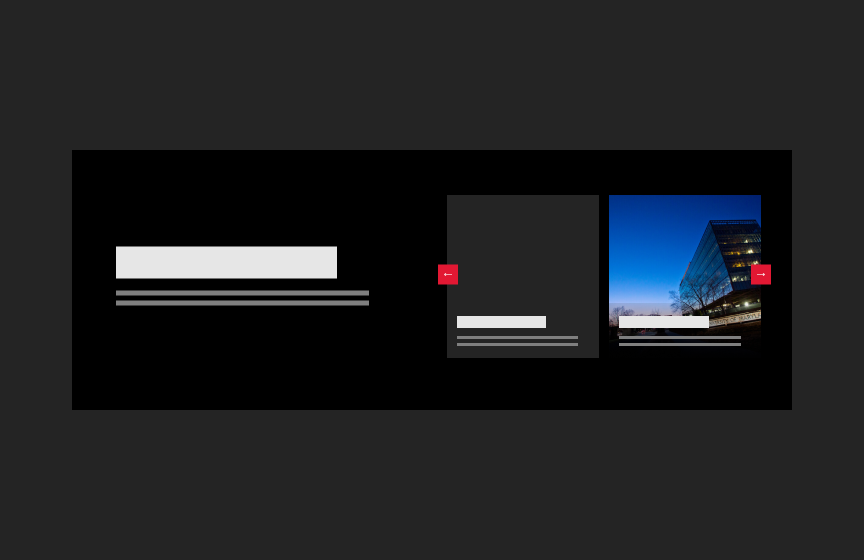Card Carousel
A Card Carousel showcases two or more Overlay Cards, accompanied by text blocks, and an optional link for further details.

Dos
Use with 2 or more cards
Can be used with Standard Cards without text or Overlay Cards with images
Don'ts
Minimize text in the title or text block
Variations
Accessibility
Keyboard Accessible
Users are able to use the keyboard to navigate through the event card using the ‘Tab’ key to navigate/focus and ‘Enter’ or ‘Spacebar’ to activate and focus can be moved away from the component. WCAG 2.1.1: Keyboard; WCAG 2.1.2: No Keyboard Trap This navigation is done in sequential and logical order when there are multiple call to actions grouped together. WCAG 2.4.3: Focus Order
Hover and Focus State
Each actionable element within the carousel (e.g., navigation arrows, call to action links) has distinct styling on hover and focus. This provides a visual cue to the user that the element is focused and an action can be taken. WCAG 1.4.13: Content on hover or focus
Color Contrast
A contrast ratio of at least 4:5:1 between text and background color is ensured to enhance readability WCAG 1.4.3: Contrast (minimum)
Responsive
The component scales in relation to the to the screen size to prevent truncating content and reflows properly when zoomed up to 200% without horizontal scrolling WCAG 1.4.10: Reflow
Best practices
For Information and best practices around cards within a carousel, see Overlay Card
Title
Use a clear and concise title that describes the card content WCAG 2.4.6: Headings and Labels
Body Text
Write body text in clear and simple language. WCAG: 3.1.5: Reading Level Use descriptive link text for inline-links. WCAG 2.4.4: Link Purpose (In Context)
Link
Use effective text to describe what the link is and where it is taking the user. This should be clear, descriptive text that conveys the link content succinctly and the purpose and destination of the link. WCAG 2.4.9: Link Purpose (Link Only)
- Example of effective text (preferred): Learn more about Innovate Maryland
- Example of generic text (avoid): Learn more
Disclaimer: If the visible link text is not sufficiently descriptive, you can use an aria-label attribute to provide additional context for screen reader users. The aria-label should clearly describe the link's purpose and destination.
- If the visible text is not necessary for screen readers (e.g., it's redundant or less descriptive), consider using aria-hidden="true" on the visible text element. This ensures that screen readers will prioritize the aria-label.
Example with aria-label and aria-hidden:
<a href="https://example.com/innovate-maryland" aria-label="Learn more about Innovate Maryland"> <span aria-hidden="true">Learn more</span> </a>
This ensures that the link is accessible while maintaining concise visible text.
Content Recommendations
Recommended character limits
Title
25 characters (50 max)
Text Block
200 characters (400 max)
Overlay Card character limits*
Reduce the length of the title and text block if they obscure a significant portion of the image.
Title
30 characters (50 max)
Text Block
120 characters (180 max)
Tagline/Overline
15 characters (30 max)
**adjusted down to account for smaller space
Layout
A component title is required. A text block to provide more background information is optional. 2 cards are required.